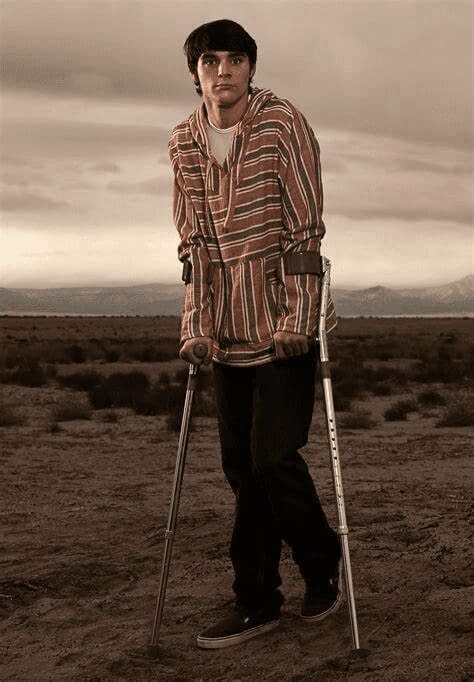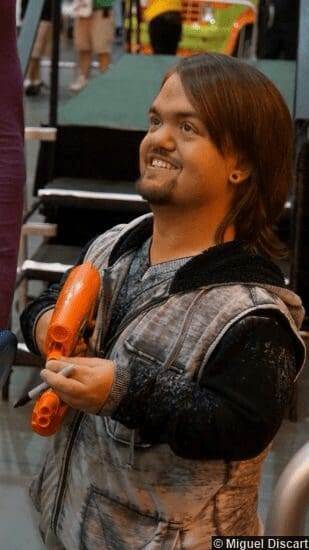
Landing an acting job with a disability in Hollywood is rife with challenges, as roles specifically written for disabled performers are few and far between. Actor Adam Pearson, who has neurofibromatosis and stars in the new A24 film “A Different Man”, notes that roles for performers with facial differences typically fall into tired tropes like villains, victims, or “inspiration” pieces.
Adam Pearson, a renowned actor, has a diverse background, including his role-playing opposite Scarlett Johansen in Jonathan Glazer’s 2013 film Under the Skin and his work as a researcher for Channel 4’s The Undateables series. He also contributed to the development team and provided advice for the Dutch adaptation of Beauty and the Beast. Pearson’s reporting has been featured in the BBC Three documentaries Adam Pearson: Freak Show and The Ugly Face Of Disability Hate Crime.
As Pearson states, “Normally there are three kinds of roles or tropes for us. We’re either the villain because I have a disfigurement and I want to kill Batman or James Bond, or the victim like ‘woe is me,’ or the hero, because I have a disability but do regular stuff I’m somehow braver than the next guy.”
Indeed, the lack of authentic disability representation in Hollywood stems in part from non-disabled writers crafting stereotypical disability narratives. When roles for disabled performers do emerge, they often traffic in humanity’s strange schadenfreude, framing the disabled character as heroic or brave simply for living with a disability.
The exceptions to this rule are typically when the disability is portrayed as a side plot point for the actor to expand their range, such as with Breaking Bad’s R.J. Mitt; where Mitt uses mild cerebral palsy from his real life to represent a severe case of the disease in Walter White Jr. (Flynn).

Securing more substantial, nuanced roles reflects another barrier for disabled talents in Hollywood – landing roles not specifically written for a disabled performer. The controversy around Disney’s live-action “Snow White” remake highlights this issue.
When Disney announced it would replace the seven dwarfs with “magical creatures” to avoid reinforcing disability stereotypes (and arguably to appease Hollywood’s dwarf star Peter Dinklage), a backlash emerged from some in the dwarfism community. Wrestler Dylan Postl aka WWE’s Hornswoggle, who has dwarfism, criticized the decision in the Daily Mail, arguing it could cost little people jobs in Hollywood.
As Postl stated, “Seven little people will now be out of a job. Honestly, who died and made Peter Dinklage King of the Dwarfs? It pisses me off.” Though Disney likely acted to avoid perpetuating stereotypes, the move still limits opportunities for disabled performers in the name of nebulous offense.

Postl also noted, “It’s not demeaning or degrading to take a role that is specifically made for a little person. But that’s exactly what Dinklage and Disney want to get rid of.” This captures Hollywood disabled actors’ central struggle – landing roles not specifically written for disabled actors while also having opportunities for roles that provide disabled representation.
RELATED: Will Ferrell’s Will & Harper Guilt Trips Sundance Audience With Trans Propaganda Film
Navigating these barriers impedes disabled talents in Hollywood. When roles do emerge, they often lack nuance and accurate disability portrayals. More authentic disability representation requires Hollywood to include disabled creatives in the writers’ room and expanding casting calls.
As Adam Pearson noted, consulting disabled talents in the development process and hiring disabled scribes would allow more organic, truthful disability stories to emerge in Hollywood. “It’s lazy writing,” Pearson added. “Why are non-disabled people writing about disability without consultation? When that happens, the end result …you might get it right once, but 9 times out 10 it’s going to be very inauthentic and inaccurate.”
There are also calls for Hollywood to take the same approach to casting disabled roles as they have for increasing racial diversity – widening the talent pool instead of limiting options. If more casting calls welcomed disabled performers to audition for any role, not just disability-specific ones, it could expand opportunities.
By moving beyond stereotypes and leaning into inclusion behind the scenes and auditions, as brought up by Adam Pearson, Hollywood can better embrace disabled talents while still providing a platform for disability representation. Though barriers persist, a willingness to widen the door for disabled artists could foster positive change. The work is underway – now the industry needs to push forward.
Do you think Adam Pearson has a point in Hollywood’s treatment of the disabled? Let us know in the comments.
NEXT: ‘DARTH SHADOW’ Shadow The Hedgehog Rumored To Be Voiced By Hayden Christensen For New Sonic 3 Movie

Leave a Reply